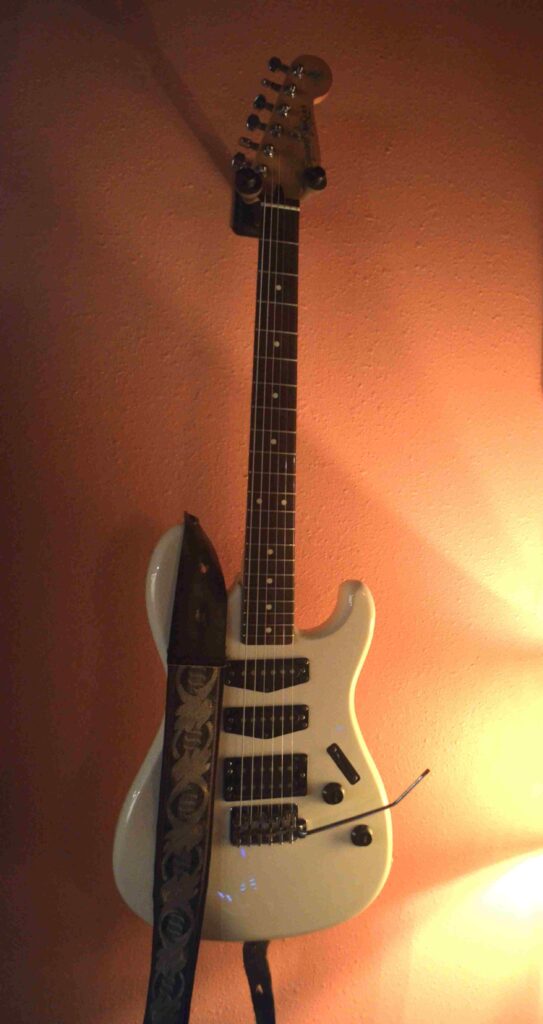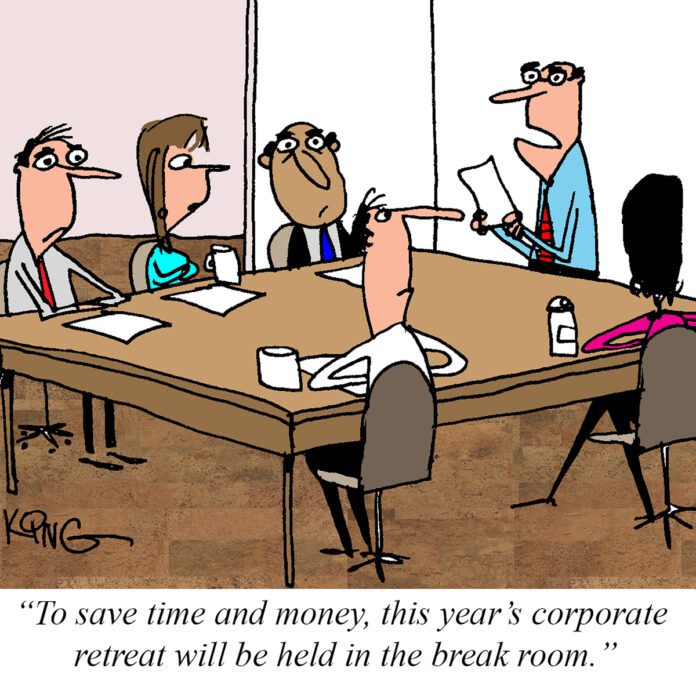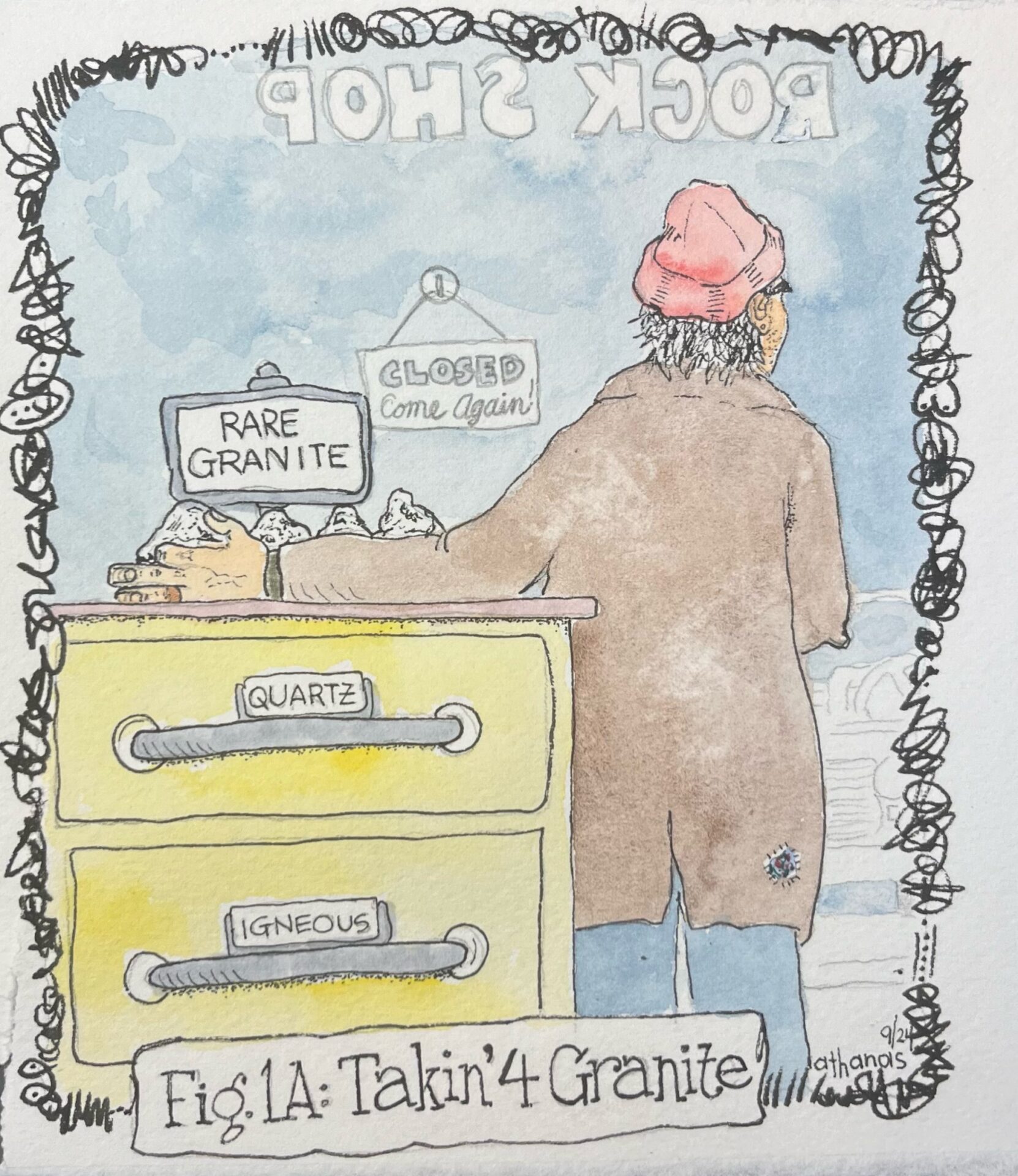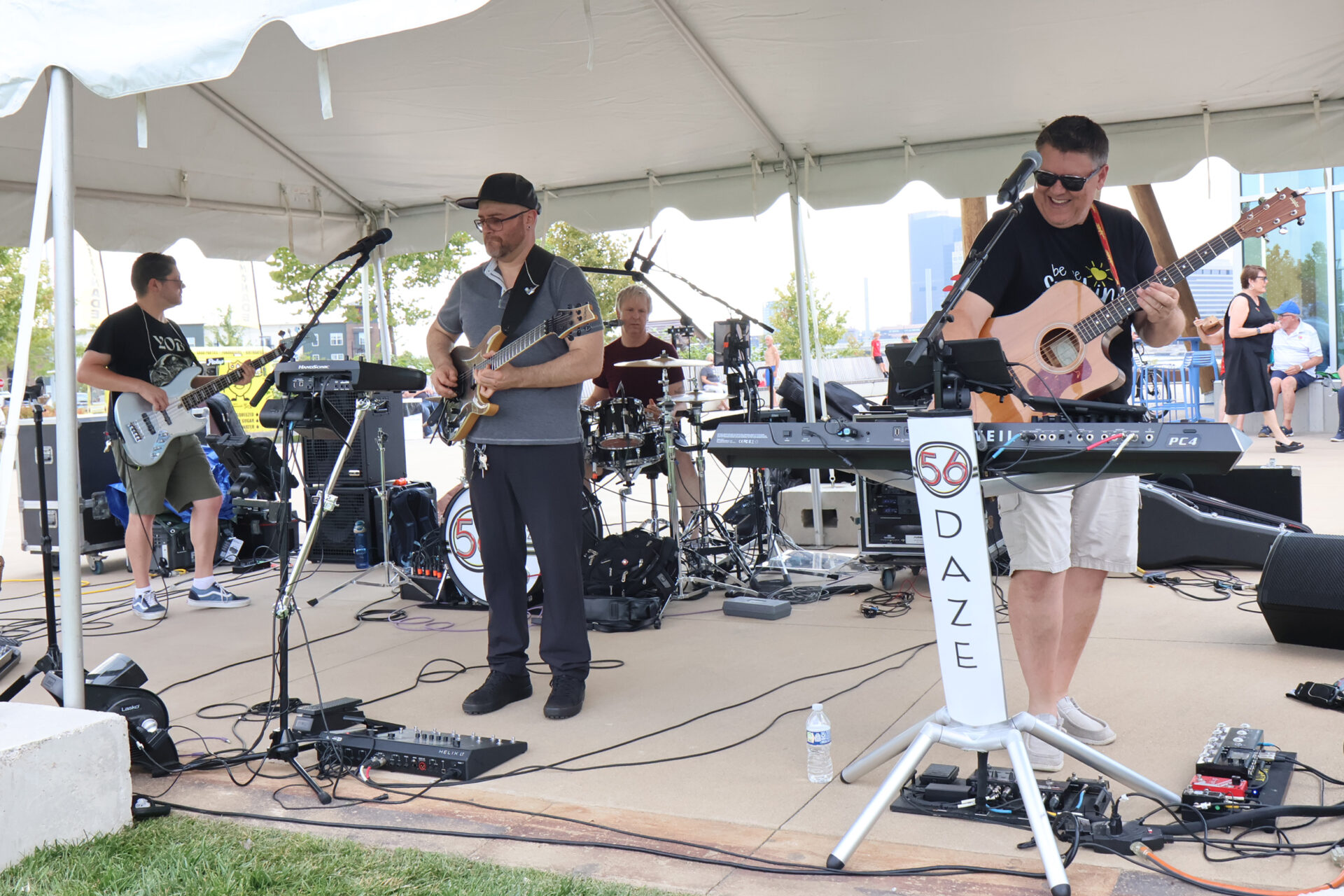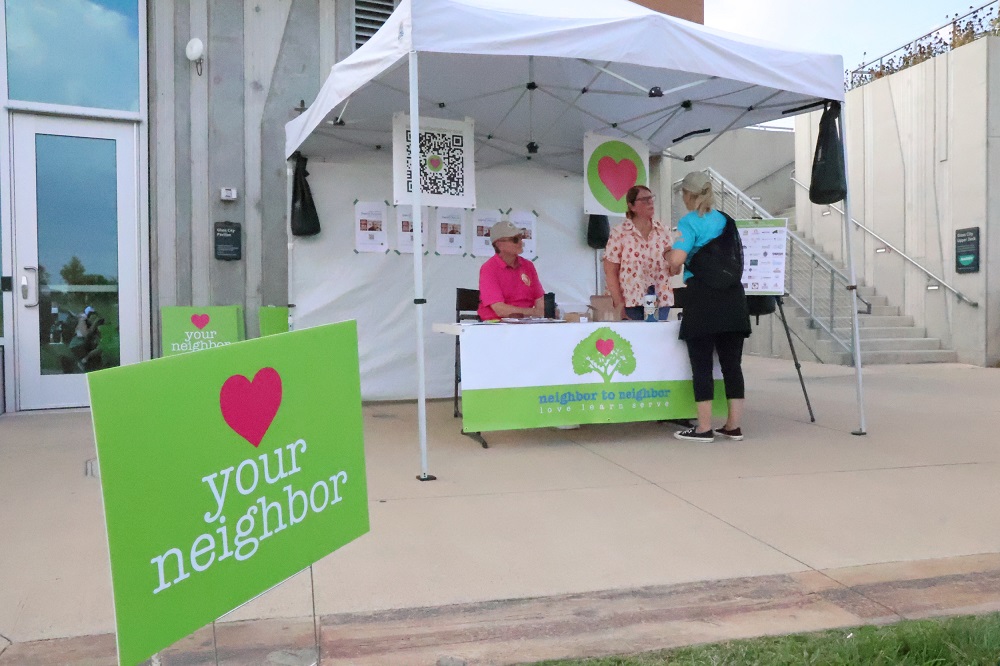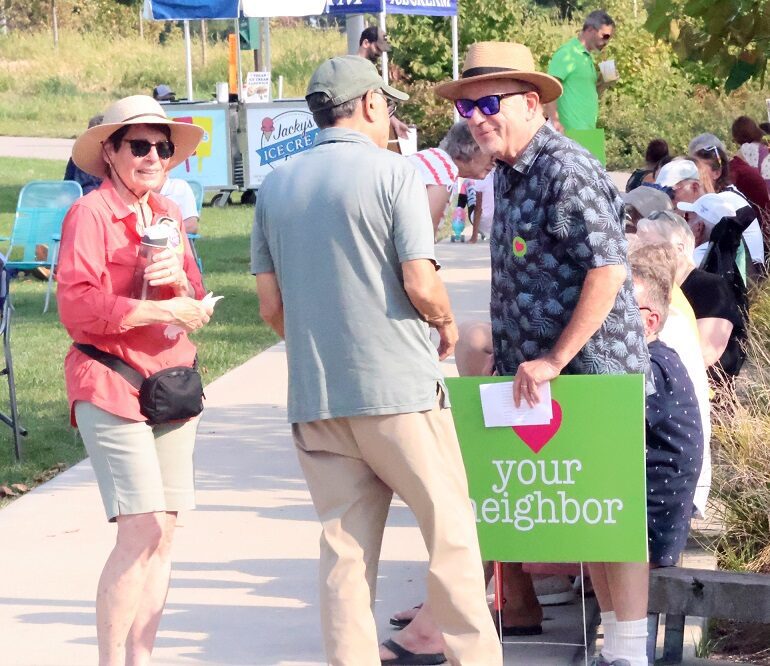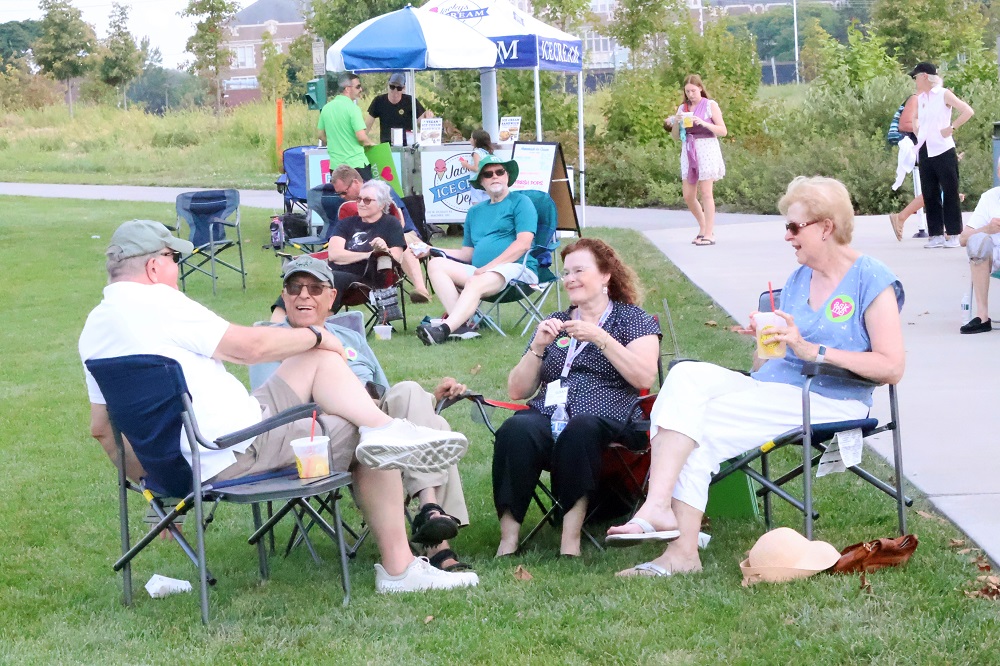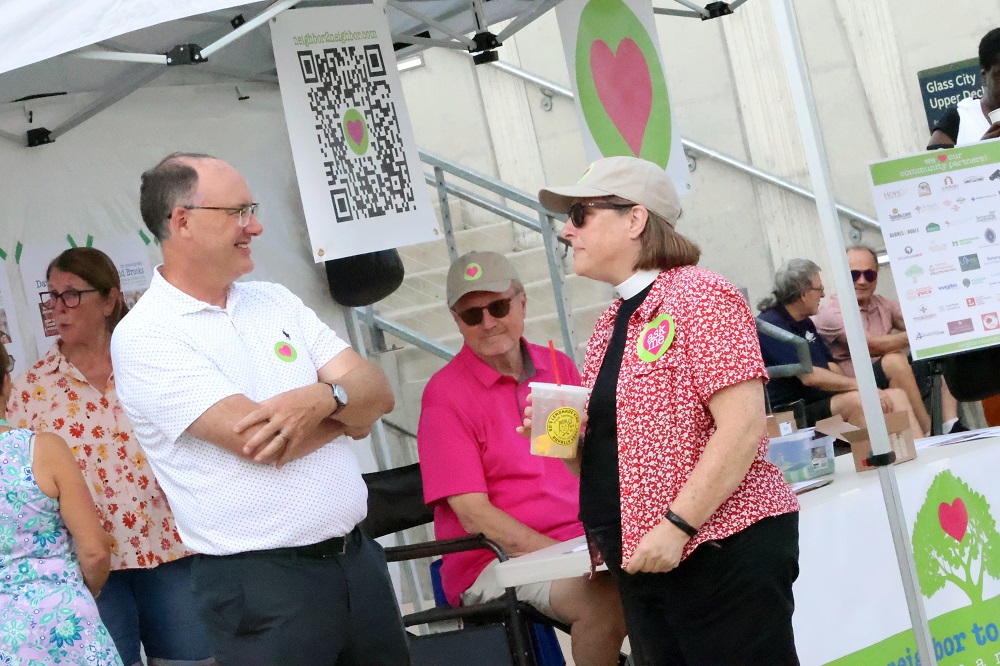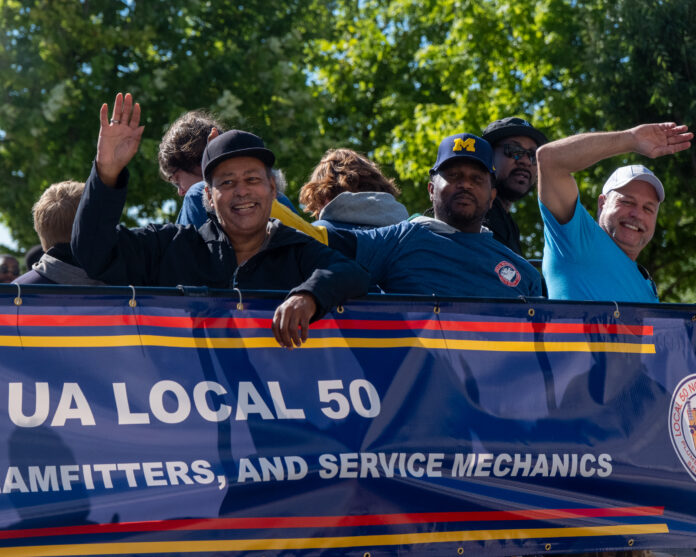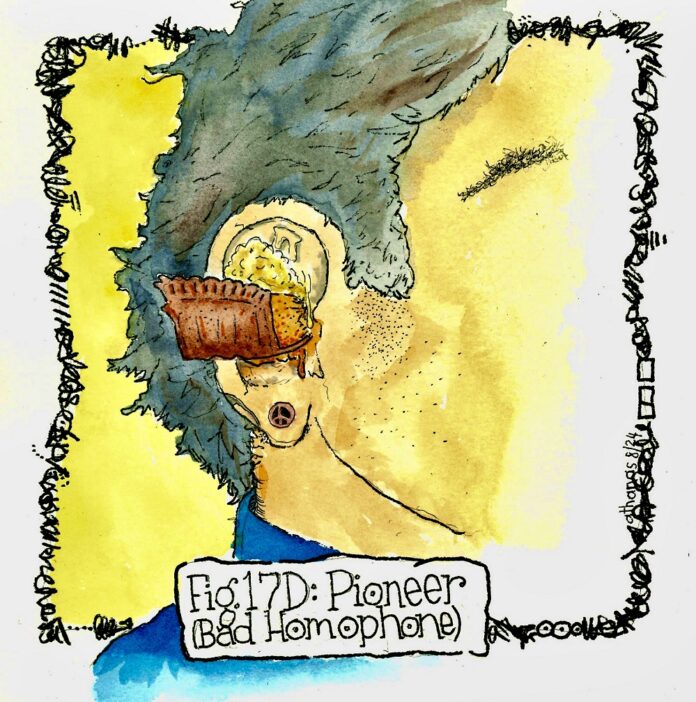‘Belonging’ vs. ‘Othering’
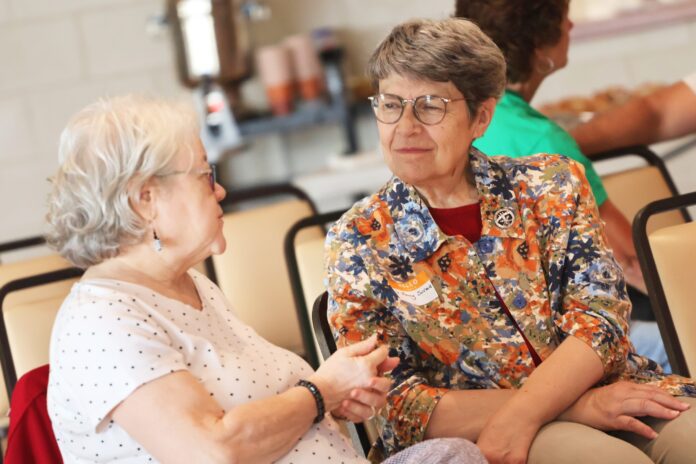

Program gives residents tools to bridge divides in community
SYLVANIA – How do you interact with people who don’t think the same way you do?
In a deeply polarized society, there is a growing tendency to avoid hard conversations, to categorize others by their politics or other group affiliations, to “unfriend” or “snooze” the people with whom we disagree.
Mike Linehan saw it at his family reunion over the summer. “We all huddle in our own safe little camps of thought. We exchange pleasantries in the beginning and the end of the reunion, and nothing happens in between,” said Linehan.
Linehan and about a dozen others attended a workshop Aug. 24 in Sylvania to learn about Bridging to Belonging, a program to empower communities to create spaces where every person belongs and contributes together.
The MultiFaith Council of Northwest Ohio hosted the event at Olivet Lutheran Church to introduce the program that was originally developed for the InterFaith Leadership Council of Metropolitan Detroit.
Donna Mens, a member of the MFC and Olivet Lutheran Church who attended the workshop, expressed interest in gaining the tools to effectively listen to people who have different opinions.
“I feel the polarization, especially politically right now, and it is so emotionally charged,” said Mens. “So how do we bridge that? How do we listen to each other, and what people’s thoughts and values are without that defensiveness and that emotion?”
Rachel Cannon, a psychologist specializing in organizational development and behavior and co-creator of Bridging to Belonging, spoke on the science of belonging. She explained how the program helps participants learn to build genuine connections with people from groups outside their comfort zone.
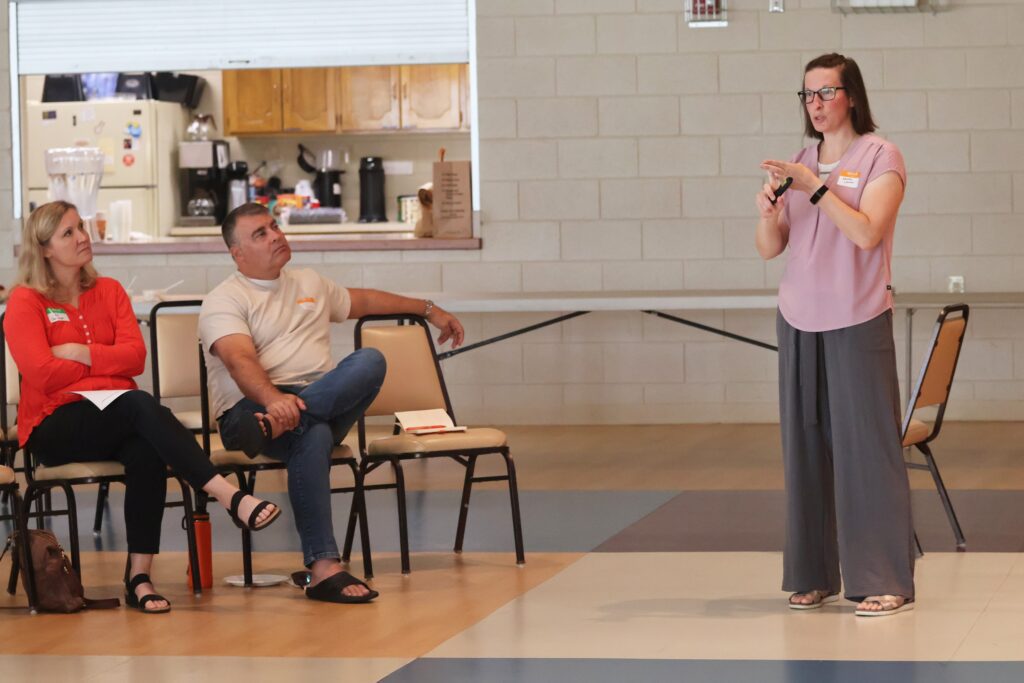
The opposite of belonging is “othering,” Cannon said. This emphasizes the differences between groups of people and can often lead to extreme forms of hate. Whether looking at race, faith, age, socio-economic status or another characteristic, “othering begins simply when you flatten someone’s identity and only see one aspect of who they are,” said Cannon.
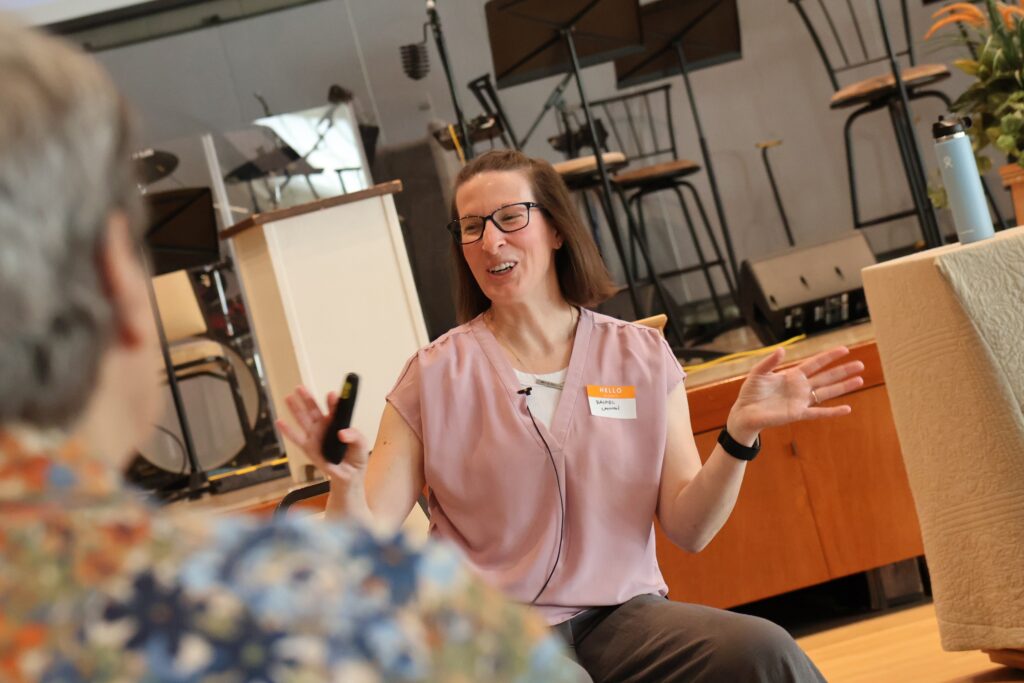

According to Cannon, humans naturally do this as a way of trying to explain the world around them. “We see one thing that happens, and we try to fill-in the rest of the story,” she explained. “The challenge for us is, can I stop my natural tendency and can I become more curious?”
Cannon cited research from the nonprofit More in Common that revealed Americans often have a distorted understanding of what people on the other side of the political aisle really think. “Our sense of division, our sense of polarization, is really truly about perception,” she said. “The gap between where, say, Democrats are, and where Republicans think they are, is very big … and vice versa.”
This perceived polarization “leads us to viewing others as a problem, because we think we know the story,” added Cannon. “So our efforts are focused on others rather than starting with ourselves.”
Bridging to Belonging started several years ago in the wake of the pandemic, and Cannon estimates a couple hundred people have participated in the Detroit area.
Diverse groups consisting of six to eight people meet four times over the course of eight weeks to share stories, and explore their values and dialogue on how to collaborate. They also view online learning modules between meetings to learn skills they can practice to foster belonging and build bridges between different groups.
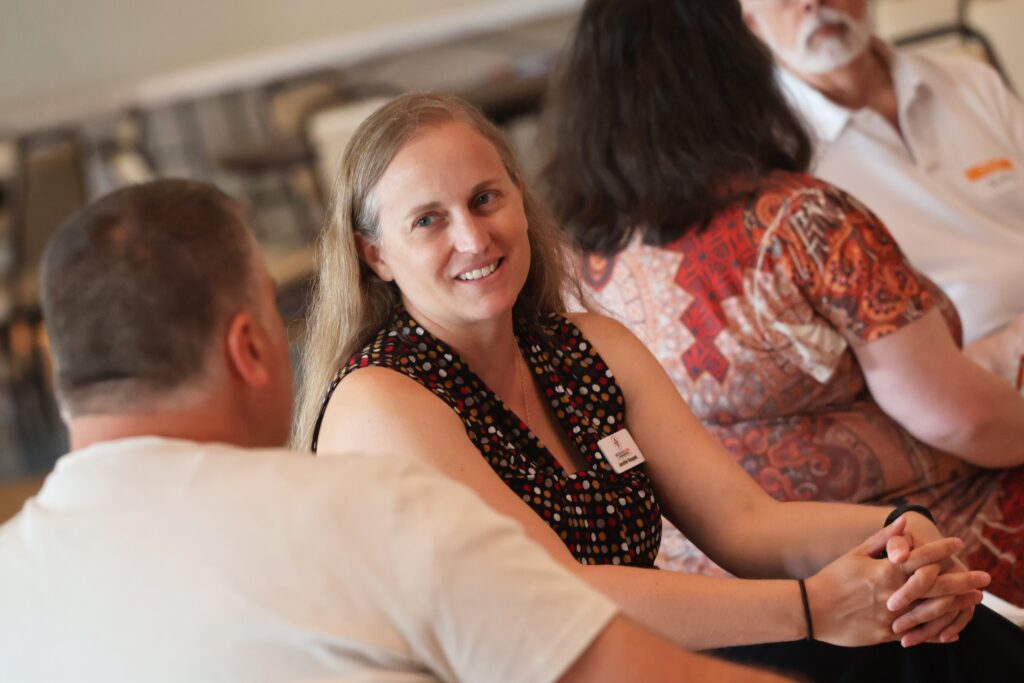

Jennifer Vasquez, executive director of the MFC, said the next step is for a small local group to train as moderators by going through the eight-week program together this fall. Once they complete the training, the plan is to begin forming other groups in the Toledo area.
“We’re hoping that other organizations and faith communities, and maybe even businesses, might be interested in going through the process and then apply the skills they learn to the work they’re already doing,” said Vasquez.
Cannon said the real impact of the program is measured by the “ripple effect” individuals have on the people around them.
“We might think that ‘I’m just one person,’ but you have connections to many different communities,” she said. “You don’t need to be the bridge to everything — the ones where you already have connections is where you start.”
In celebration of neighbors
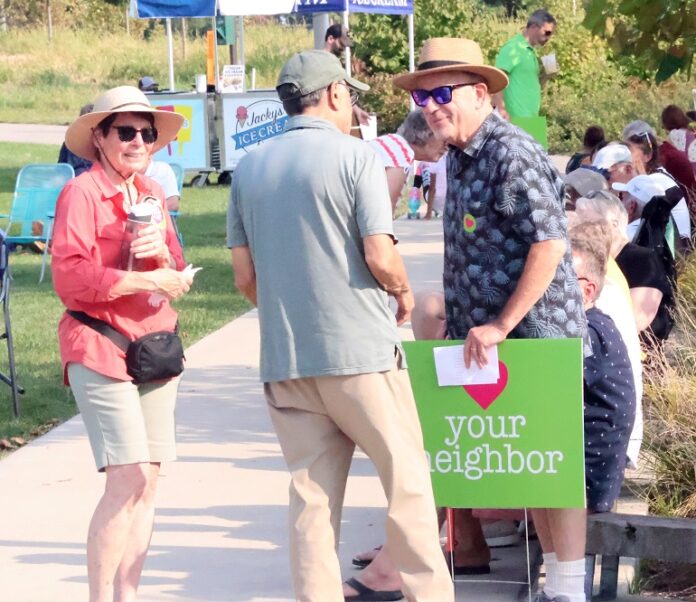

Initiative urges residents to put neighbors before politics
TOLEDO – Green signs emblazoned with a large magenta heart atop the words “your neighbor” led visitors to the Glass City Metropark pavilion for food, children’s activities and a concert featuring crowd-pleasing hits from the last several decades.
The free community party on Aug. 25 was put on by Neighbor to Neighbor Toledo, an initiative urging residents to show care for their neighbors — especially in the discordant months leading up to a hotly contested presidential election. Originating earlier this year at St. Michael’s in the Hills Episcopal Church, the effort has gained momentum, with at least 40 churches, businesses, organizations and institutions signing on as community partners.
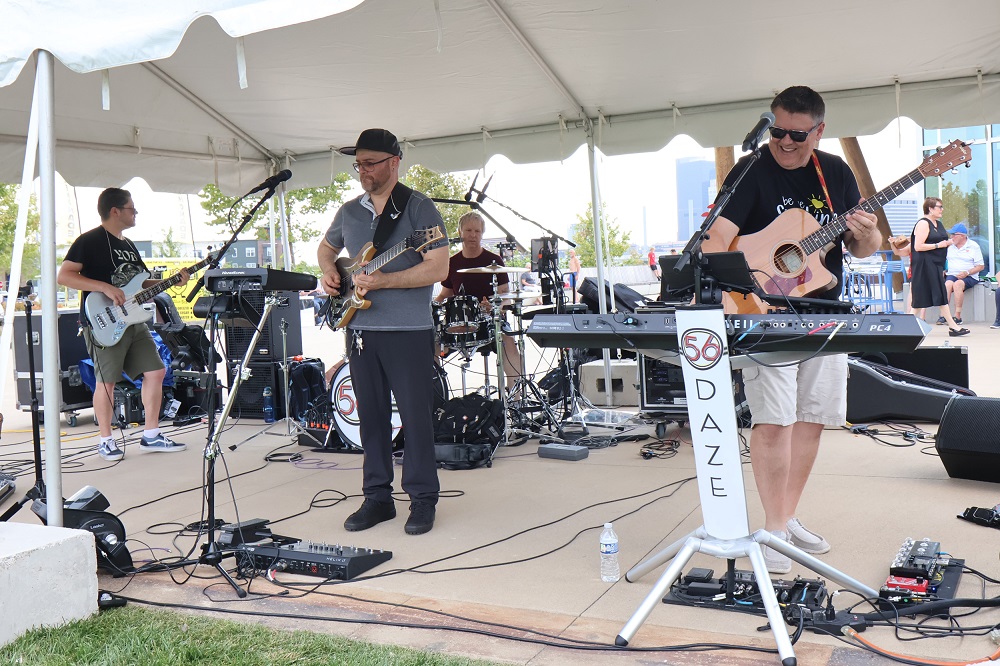

“Our tagline at St Michael’s is ‘love, learn and serve.’ So we thought we would create a series of events that would embody those things in terms of neighboring,” said The Rev. Gayle Catinella, rector of St. Michael’s.
“The first thing we decided to do is have a party because you can’t be mad at people if you’re dancing and singing next to them, right?” she asked.
Not everyone who showed up knew about the party in advance, but a good time was had by all, and many left with additional green yard signs tucked under their arms. The group is on its second round of signs after distributing the first 1,000 in just two weeks earlier this month.
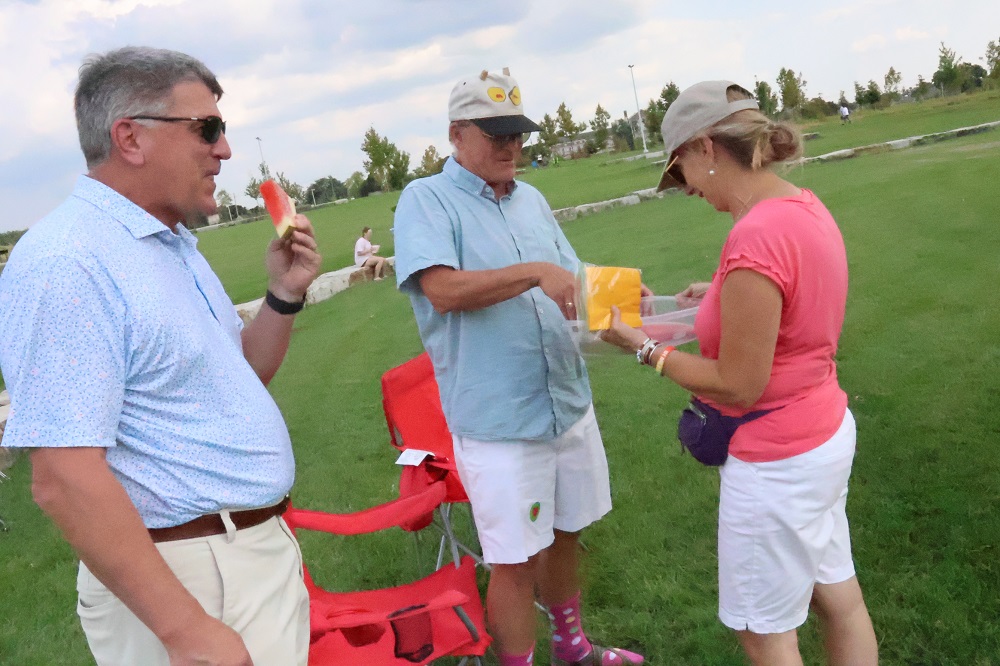

“We just want people to come together, have a good time and have a sign in their yard. That is a very concrete way of saying ‘let’s love each other and get along as neighbors,’ ” said Steve Wipfli, the sign’s designer and a member of the initiative’s original planning committee. “It’s satisfied a thirst that people have for a lower temperature during the political season.”
The colors red and blue were purposely avoided in the sign’s design, as was the mention of a specific church, Wipfli noted.
Spreading positivity
As neighbors on the opposite ends of the political spectrum, Carol Nichols and Dave Karmol have put up competing political signs in their west Toledo yards for years.
“He tells his friends that he knows any time he puts a yard sign in, that the Nichols’ will have the opposite the next day,” Nichols said of her neighbor.
“And by the way, he’s right,” she added with a laugh.
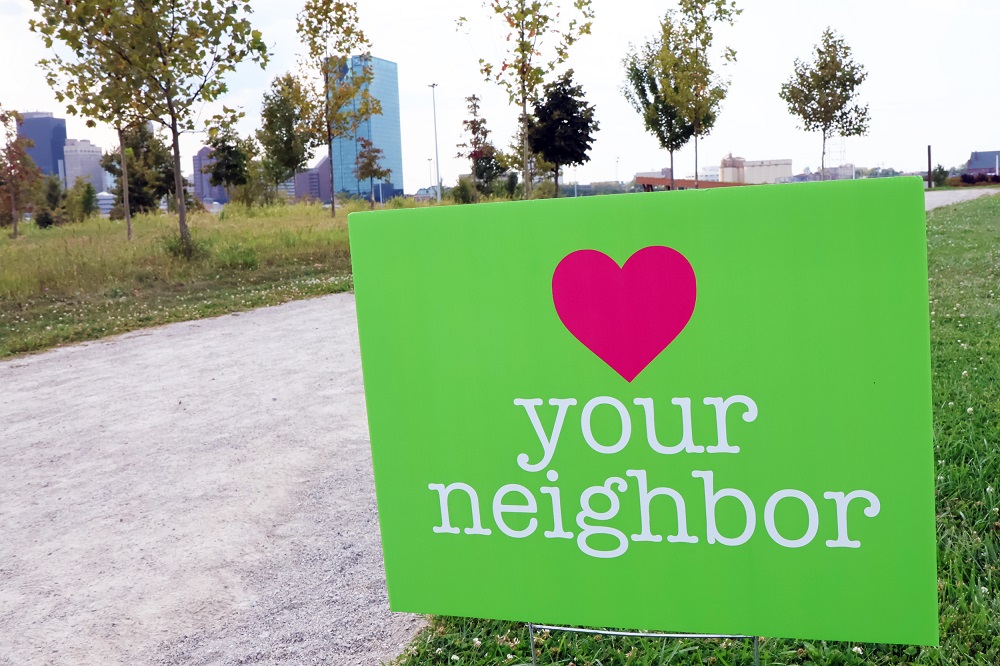

The tense political divide reflected in this back-and-forth is what led Nichols to approach Catinella in January to ask if the church could do something to bring people together, especially during election season. Her pastor responded positively to the notion, they formed a committee at St. Michael’s, and Neighbor to Neighbor Toledo was born earlier this year.
“There’s a tradition in every faith, every denomination about loving your neighbor, caring for your neighbor, being a good neighbor. We thought that might be a thing people can relate to that’s positive and hopeful,” said Catinella.
We’re not trying to change our neighbors. We’re trying to change ourselves and become the people that we want everyone else to be.
Gayle Catinella
Looking around the gathering at Glass City Metropark, Amichai Stout said the initiative was an easy cause for the Jewish Federation of Greater Toledo to support as a community partner.
“This is the right message — make connections that are genuine. Look past the labels, right?” said Stout, who serves as director of the Jewish Community Relations Council. “Look past whatever you identify with religiously, politically, and just spread the positivity and love for everyone.”
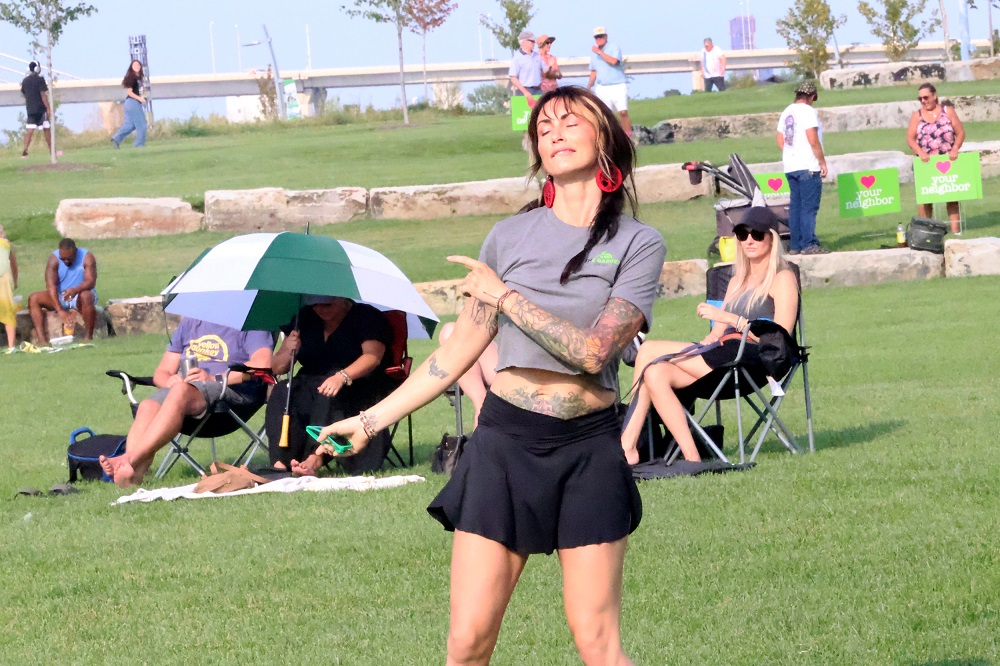

As for Nichols and Karmol, both were in attendance on that Sunday and they now share at least one yard sign in common. Karmol said his Catholic parish, Christ the King, also joined the initiative as a community partner after he brought it to the attention of his pastor.
They still disagree on politics, but Nichols and Karmol describe each other as good neighbors. “While we do have significantly different views and opinions, I think everybody wants to be a good neighbor, and everybody wants to live with a good neighbor. It’s just decency,” said Nichols.
Neighbor to Neighbor Toledo has several more events planned leading up to the election. On Oct. 8, nationally-renowned commentator and columnist David Brooks is to speak at Lourdes University about his book, How to Know a Person. Tickets are expected to go on sale Sept. 1. Catinella says Brooks will touch on the themes of being a good neighbor and listening to the stories of others.
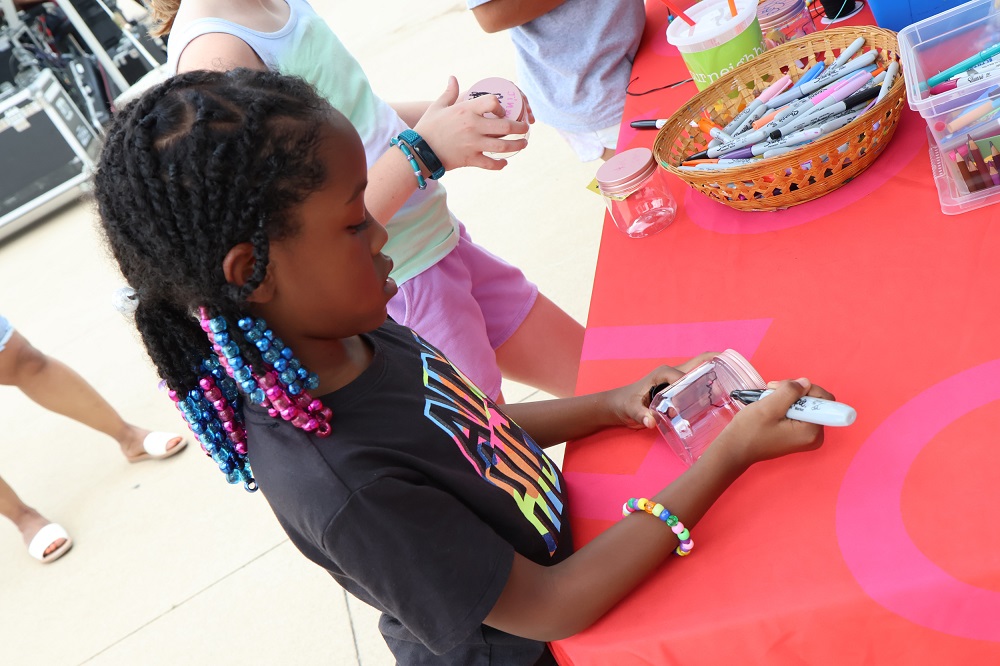

Organizers are also asking residents to participate in a week of “intentional acts of kindness” by performing small, positive neighborly actions from Nov. 1-5. After the election, the MultiFaith Council of Northwest Ohio is co-sponsoring a dinner to promote healing, fellowship and reflection. The event is planned for Nov. 17 at Glass City Metropark.
Election Day “doesn’t have to be the disaster the everyone is predicting. It doesn’t have to be violent. It doesn’t have to be scary. It can be a lot of people trying to do some good things for each other, because when this is over on Nov. 6, we will still be neighbors,” says Catinella.
She marvels at the support and generosity the initiative has received from the community since it began.
“We never expected it to be what it’s become, but I can tell because of what it’s become that it’s a good thing,” Catinella said.
Controversial H2Ohio
Will pumping money into wetlands yield clean water?
TOLEDO – There are mixed reviews of Governor Mike DeWine’s H2Ohio program among area conservation groups, Lucas County commissioners and Toledo Mayor Wade Kapszukiewicz.
DeWine’s H2Ohio program, which launched in 2019, is a comprehensive water quality initiative that is “working to strategically address serious water issues that have been building in Ohio for decades. Such problems include harmful algal blooms on Lake Erie caused by phosphorus runoff from farm fertilizer, failing drinking water, wastewater, and home sewage treatment systems due to aging infrastructure, and lead contamination from old water pipes and fixtures,” according to the Ohio Department of Natural Resources, Ohio Department of Agriculture, and the Ohio Environmental Protection Agency.


$270 million has been invested in this program for 2024-2025.
· $60.7 million to the Ohio Department of Agriculture to support and research best management practices in the Western Lake Erie basin and to expand the program statewide
· $46.6 million to the Ohio Department of Natural Resources for continued investment in creation, restoration, and enhancement of wetlands
· $27.5 million to the Ohio Environmental Protection Agency to improve the quality of life for Ohioans by ensuring safe drinking water and protecting public health
· $46.6 million to the H2Ohio Rivers Initiative to ensure community health, support economic development, and provide opportunities for recreation across the state
· $131,250 to the Ohio Lake Erie Commission to continue funding accountability tools to evaluate H2Ohio efforts
One of the controversial parts of the H2Ohio initiative is the $60.7 million spent on the Department of Agriculture. With the agricultural leg of the initiative, farmers can enroll in the H2Ohio program and receive funds by participating in a Voluntary Nutrient Management program (VNMP). The lack of regulations around the initiative has some area leaders up in arms and worried about Lake Erie’s water quality.
“The governor has a program called H2Ohio, which basically just throws good money after bad,” said Kapszukiewicz at a Lake Erie Waterkeepers event this past month.
Kapszukiewicz said that H2Ohio throws money at agricultural interests to encourage them to do the right thing. The problem will not be solved until there are some meaningful regulations and restrictions on the major manure-producing agricultural interests.
“I’m not talking about mom-and-pop farmers; I’m talking about mega Death Star entities that generate incredible amounts of pollution and manure that go untreated into Lake Erie every year,” said Kapszukiewicz.
How much manure?
Sherry Flemming of Williams County reported that “in our county alone, we have six permitted facilities that house over 30,000 hogs and two permitted dairies that have over 6,000 cows. These operations alone produce 90 million gallons of liquid manure a year, and this doesn’t even count the CAFOs (Concentrated Animal Feeding Operations) that operate below the permitting level.”
“Other states that have regulations on concentrated feeding operations have moved that industry out of those states and into Ohio,” said Lucas County commissioner Lisa Sobecki. “That’s one of the reasons why we are bringing the lawsuit against the EPA. We’ve partnered with the city in doing that.”
According to a complaint filed with the United States District Court for the Northern District of Ohio Western Division on May 1, 2024, The Board of Lucas County Commissioners, City of Toledo and Environmental Law & Policy Center claim the United States Environmental Protection Agency has failed to comply with its obligations under the Clean Water Act to prevent harmful algal blooms in western Lake Erie.
“The regional director’s office for the federal EPA is in Chicago,” said Sobecki. “And I will guarantee you if they looked out over their lake and it looked like our lake looks here, they’d be all over it. So, come on, treat this like this is your home and help us get this cleaned up. Be a partner. The residents have done their part as taxpayers, but the lawmakers have not.”
But with the criticism of the program also comes praise.
“Lake Erie has been impacted for a long time, a couple hundred years, from the loss of wetlands around it,” said Black Swamp Conservancy Conservation manager Melanie Coulter. “We need to get back some of the wetland functions that were lost.”
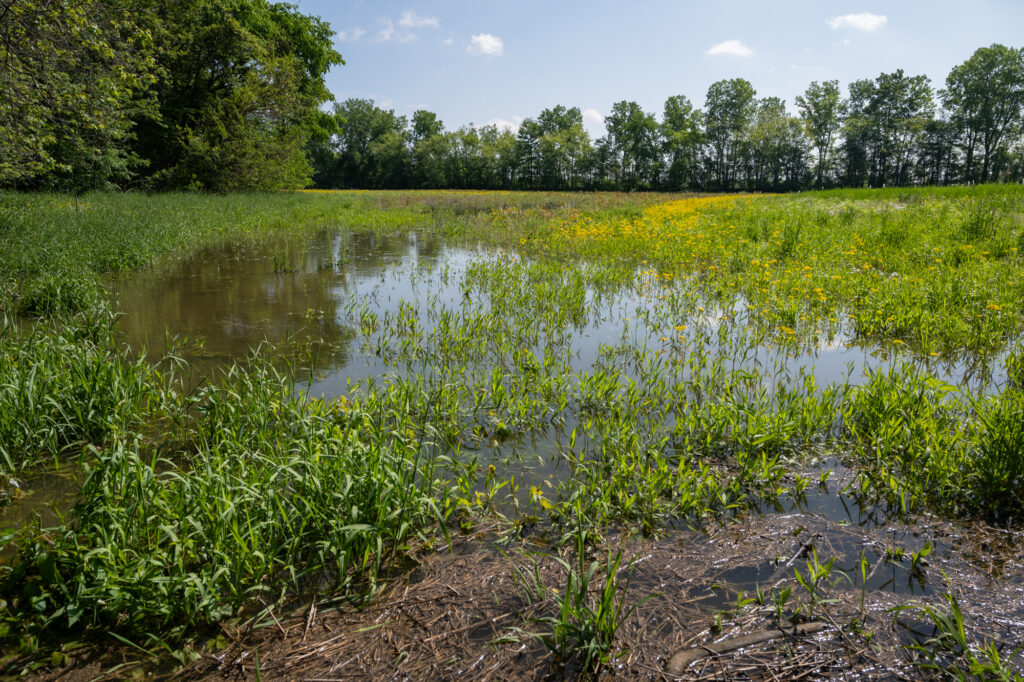

Black Swamp Conservancy buys farmland and works with initiatives like H2Ohio.
“We change the land from intensive crops back into a native habitat such as a wetland, a forest, or, like the Great Black Swamp, a forest wetland,” said Coulter. “In strategic locations, farmland to wetland will clean the most water.”
Rob Krain, executive director of the Black Swamp Conservancy, said the H2Ohio program is helping make great progress.
“We have been partnering with Ohio Department of Natural Resources (ODNR), providing money for purchasing land and turning it back into natural habitats for water quality and recreation,” said Krain.
In a wetland, sediments and nutrients have a chance to settle at the bottom, and then the vegetation can utilize that settlement for growth. If the wetland isn’t there, that sediment goes into the lake to feed toxic algal blooms instead of the wetland vegetation.
“One of the best things about ODNR’s use of H2Ohio is they have the Lake Erie Aquatic Research Network (LEARN) that are studying these wetlands on the ground,” said Krain. “They are informing us on how to better create these wetland restorations.”
“The reality,” he added, “is the long-term data shows wetlands are the most cost-effective, easiest ways to help with water quality. Wetlands will play a significant role in solving this problem.”
“We take direct action and what we are doing is improving water quality. Using Mother Nature’s defenses to help solve this problem is a critical piece of this puzzle,” said Krain.
Unions celebrate Labor Day
Thousands march in solidarity to support the labor movement
TOLEDO – Thousands gathered in downtown Toledo to watch local unions march through the streets of downtown to celebrate the labor movement during the annual Labor Day parade on Monday.
Attendees watched as about 85 union groups marched for two hours carrying banners representing local unions they belong to. Marchers held signs, chanted, and threw candy and toys to the children, while attendees viewed trucks, trolleys, classic cars and other vehicles slowing make their day down Summit and Monroe streets. Several local school marching bands also performed in the parade.
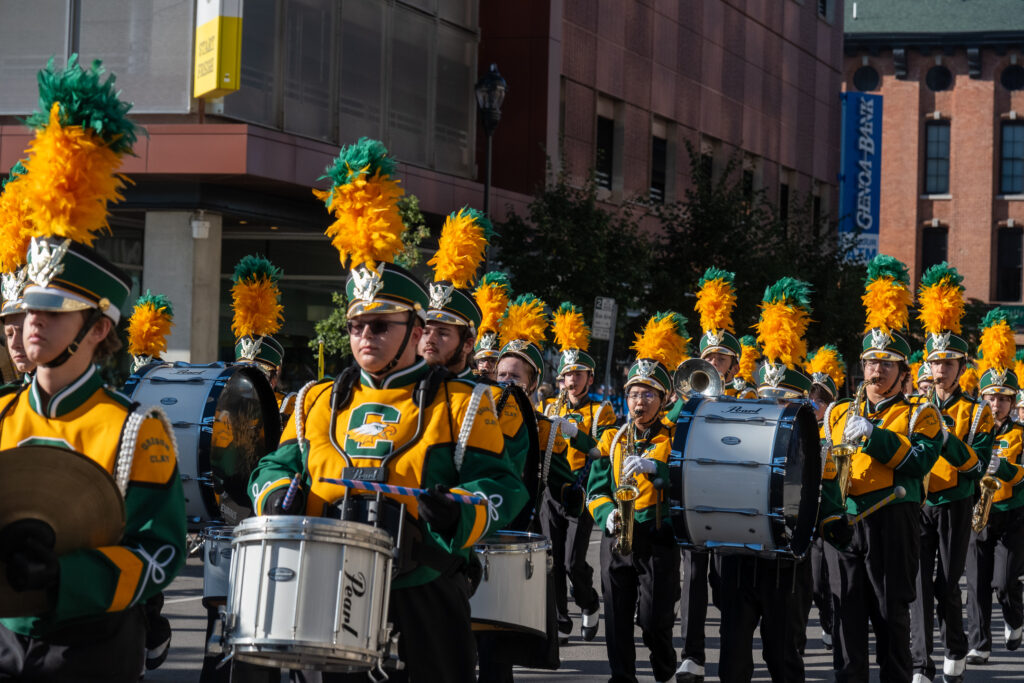

John Kowalski, a United Steel Workers Local Union 912 member and an employee at the Toledo Refining Company, was in attendance for the parade. He explained why he thinks unions are important.
“Unions fight for the small guy, bring up wages, bring up the work-life balance so you’re not working 80 hours a week,” he said.
Anyone who does not support unions needs to “do their homework and look into the actual facts, not just what the media portrays it as.”
John Kowalski, United Steel Workers Local Union 912
Kowalski said he believes the parade is important because it gets people to come out in support of the City of Toledo.
According to the U.S. Department of Labor, “Labor Day is an annual celebration of the social and economic achievements of American workers.” Labor Day has been celebrated since 1882 but did not become a federal holiday until President Grover Cleveland signed a bill into law on June 28, 1894.
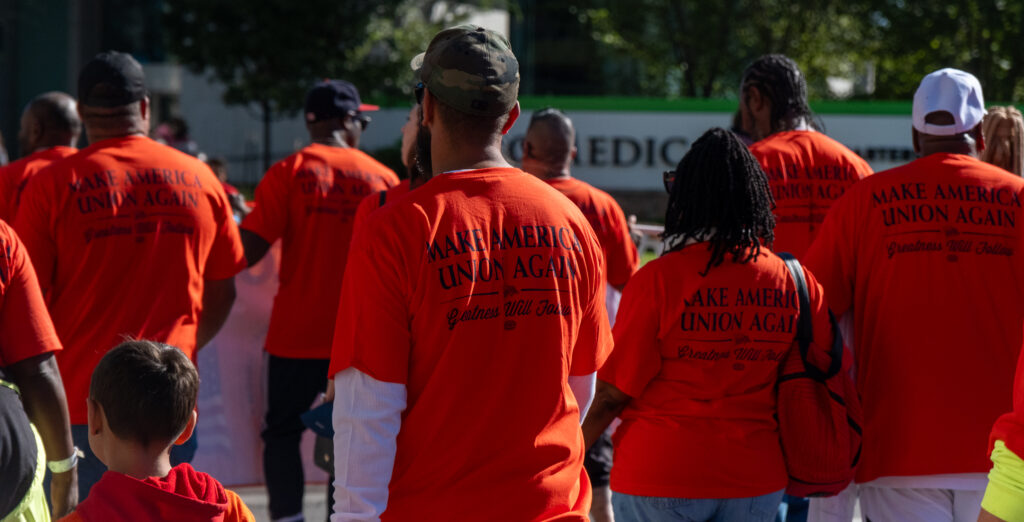

Before unions, workers would be forced to spend long hours in unsafe and deadly working conditions while earning low wages. To prevent this, unions work to improve workplace conditions and the well-being of the workers. Unions negotiate benefits for their members, such as fair pay, breaks, vacation and sick time, and a fair schedule to ensure members are well-rested.
In the United States, unions trace their origins to 1794, when Philadelphia Shoemakers formed The Federal Society of Journeymen Cordwainers.
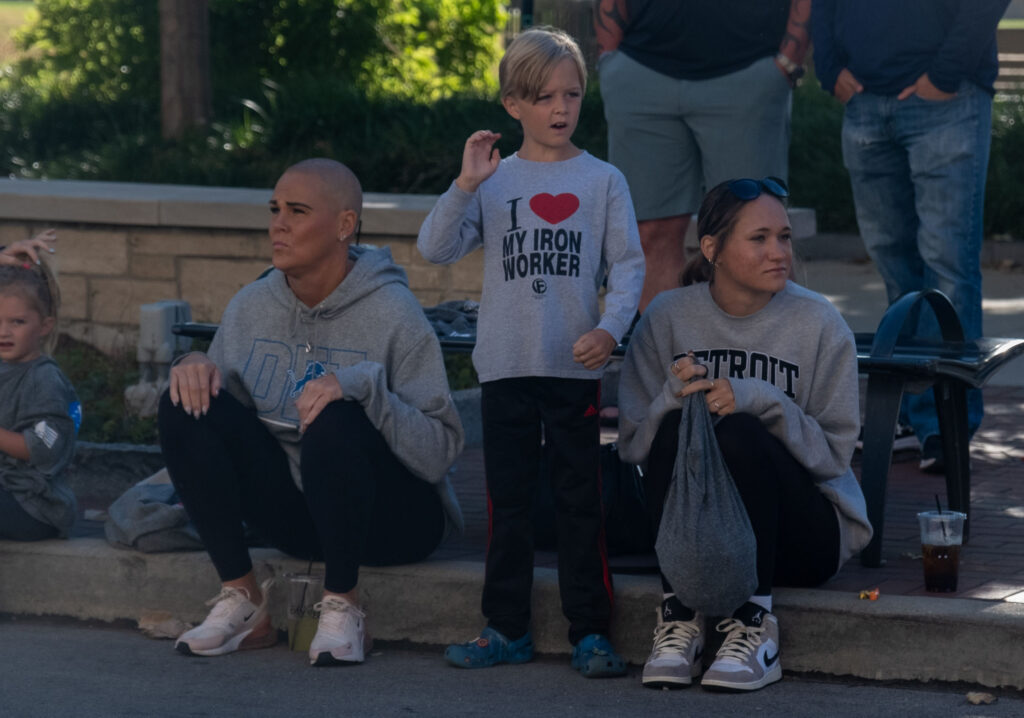

Mark Schmiehausen, president of Teamsters Local 20, has been personally involved with the Labor Day parade for 34 years. He believes the local unions represent hardworking men and women across the United States.
Schmiehausen explained where workers would be without union representation. “The employer would be able to direct the workforce without a contract, without rules, it would be an unfair playing field.
Schmiehausen closed by saying he wants to see more people be unionized and have a voice in the workplace.
“We have to celebrate labor: The middle class built this country, they continue to build the country, and it’s a day to celebrate all the hard labor. It’s the tiers of making America great,” he said.
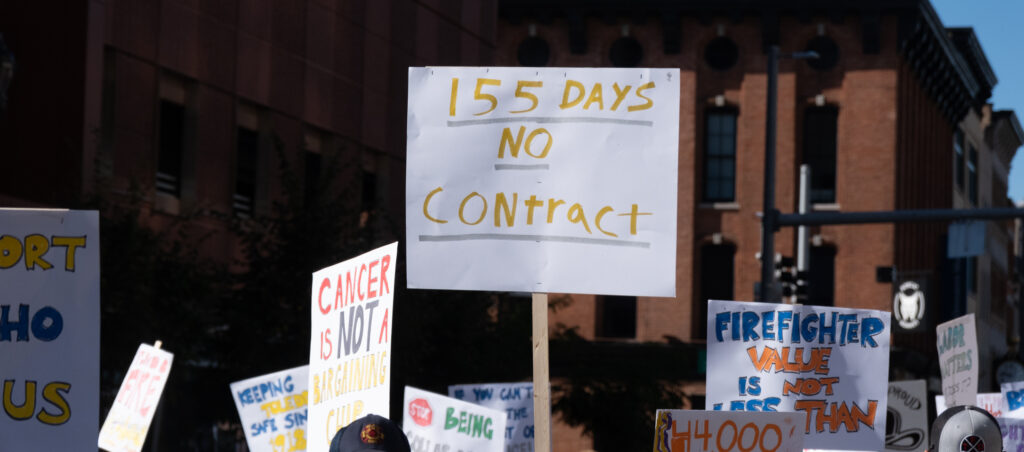

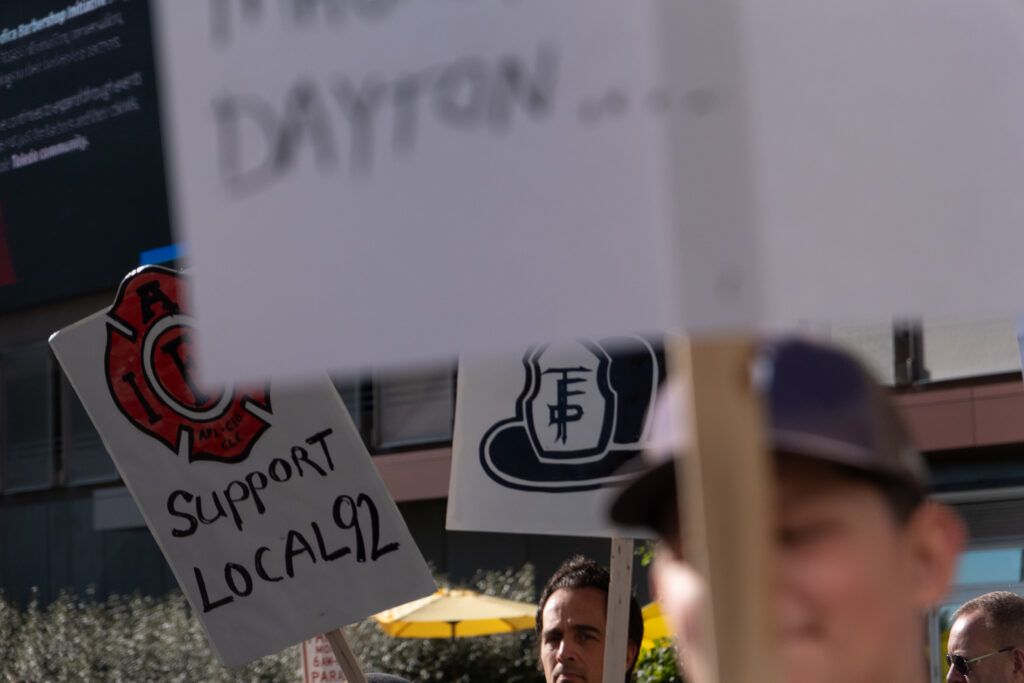

Joe Boes knows guitars
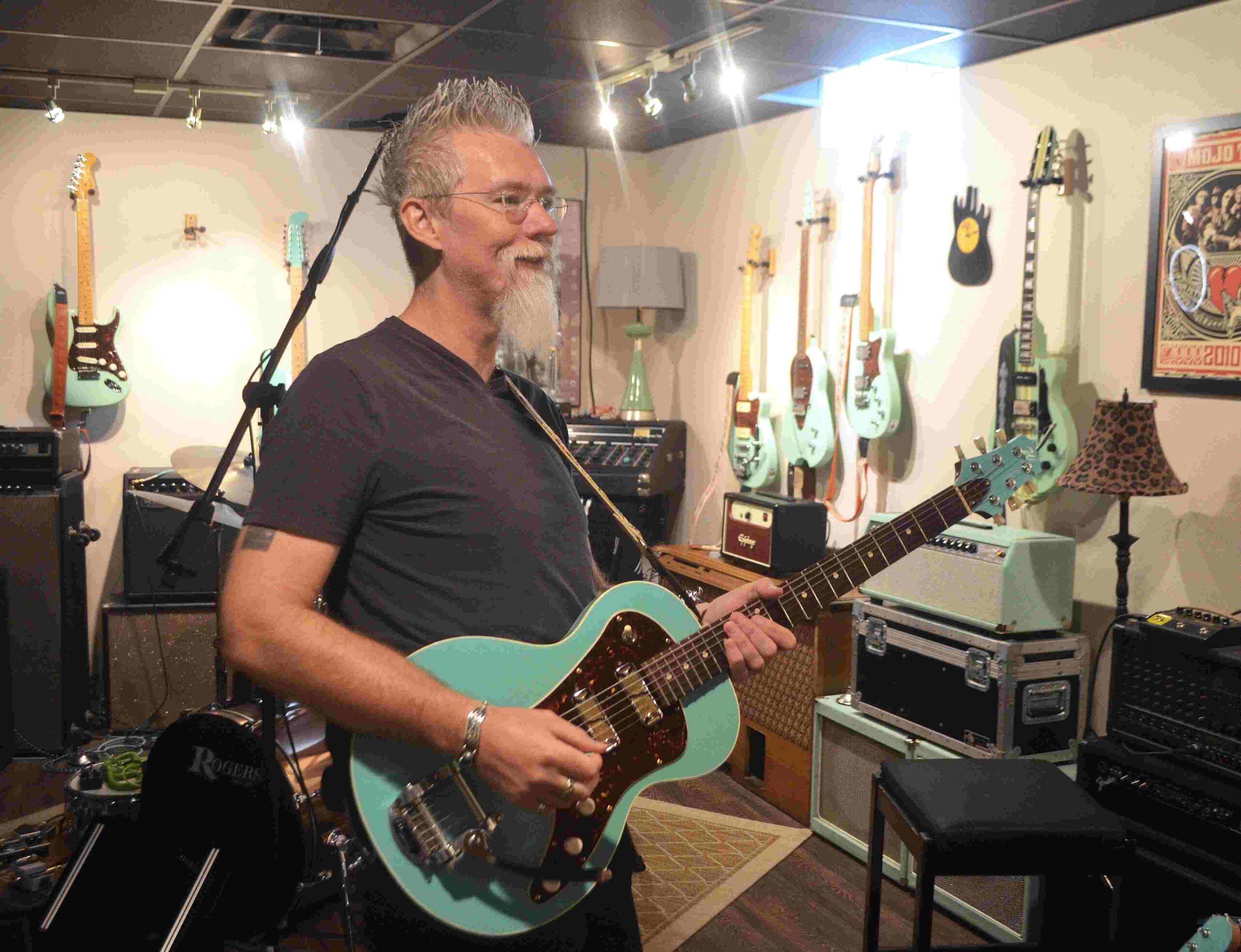

‘Mojoe’ Joe Boes picked up a guitar at 15 and never stopped playing
SYLVANIA – Joe Boes knows guitars.
The Toledo-born musician has built his life and career around the six-stringed instrument. He plays them, collects them, makes and repairs them, teaches others to play them, and just enjoys being around guitars.
“I love them all, especially electric guitars,” Boes said in his home studio, surrounded by dozens of guitars and amplifiers, most of them painted in his signature color, seafoam green.
He started playing when he was 15. He had a friend who was selling a Squier Bullet guitar for a little under $300. Boes said he didn’t have the money so he hand-wrote a promissory note to his parents begging them to buy it.
I, Joe Boes, promise to learn guitar and not give it up because my dad payed (sic) good money for the guitar and I promise to make him proud of me.
Joe Boes
They bought him the guitar and he played it for about nine years before he bought another one. He still has it, hanging proudly on a wall in his studio.
When he graduated from Bowling Green State University with a music degree, his father pulled the note out of his wallet, where he had kept it all those years, and handed it back to Joe.
Obviously, Boes kept his promise.
“Pretty much,” he said. “I feel pretty good so far.”
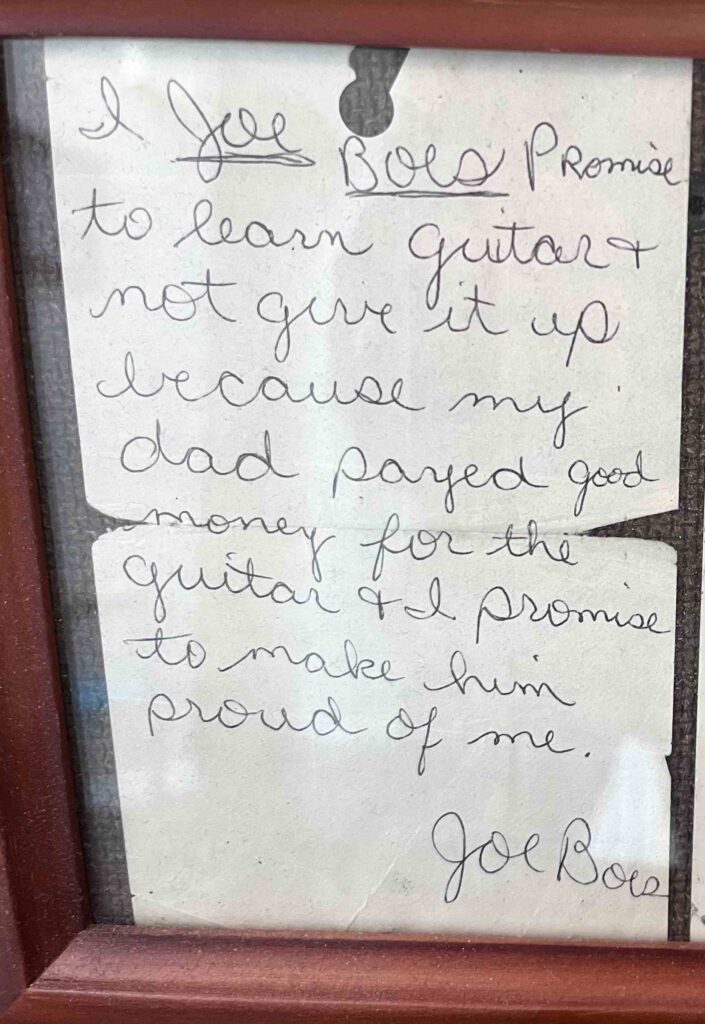

Boes has never stopped playing. As a teenager, he used to practice when he got home from school until he went to bed.
“I’m fortunate because I still play every day,” he said.
Sitting on a desk chair at a recording console, cradling a mug of coffee, the musician with the distinctive spiked gray hair and long goatee said he not only loves guitars, he loves to talk about them — or anything that has to do with music.
His career is a mix of performing, teaching, recording, and working with local luthier Larry Wagner to set up and repair guitars.
“I’m blessed. My wife Laura is very much a person who supports me doing what I do, and that’s important. She’s like a champion for me. My wife’s not saying, ‘You should be outside cutting the grass.’ No, she’ll say, ‘Why aren’t you recording your songs?’”
Boes is taking her up on that, working on a new CD of original material that he hopes to release by the end of the year. His last CD featured songs he wrote during his engagement to Laura and they gave copies to their guests at their wedding in 2005.
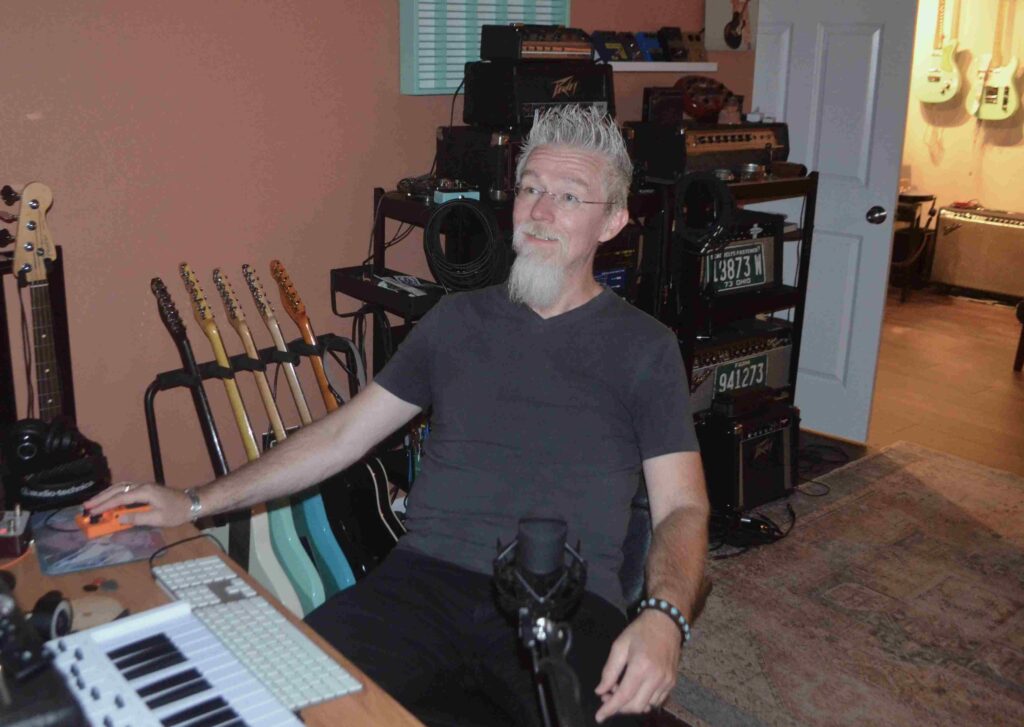

Lately he has been recording .library music,’ creating a catalogue of multilayered instrumental tunes on keyboards with just a touch of guitar designed for television or movie soundtracks. He enjoys it because the moody instrumental songs are vastly different from his usual guitar-based music and vocals.
“It’s like there’s another corridor you can walk down in my brain. I love it. The good news is it still has guitar, but the main thing is that it has character.”
Character is vital to Boes, saying it’s what separates good music from the bland, overproduced music that dominates popular music.
“There are so many people who have a record deal who would never win American Idol, but they have character in their voice. I embrace that because I don’t have the best singing voice, but I have character.”
He feels the same about his guitar abilities, which are formidable but not flashy.
“I’m not a monster player,” Boes said. “I’m not just going to blow over a blues tune with a bunch of solos and people might go, ‘So?’ Instead, from a writer’s standpoint, you can steer where the tune goes, which means you can kind of steer where the audience goes. You get a chance to basically be in the driver’s seat, not just responding to a blues chord change.”
He has been leading his trio, Mojoe Boes & His Noble Jones, for about 20 years. He likes to describe their style as eclectic electric music. They perform Boes’ arrangements of songs by artists ranging from the Beatles and Oasis to Frank Sinatra and the Archies.
His band plays at local clubs but not every week, or even every month. The group played at the Majestic Oak Winery in Grand Rapids, Ohio, in August and will be there again on Oct. 11 and Dec. 7.
Boes is quite busy with another gig that landed in his lap about two years ago, playing in the Ultimate Kenny Rogers Tribute band led by Alan Turner, who performs as the 1980s Kenny Rogers, with white hair and beard and a white suit.
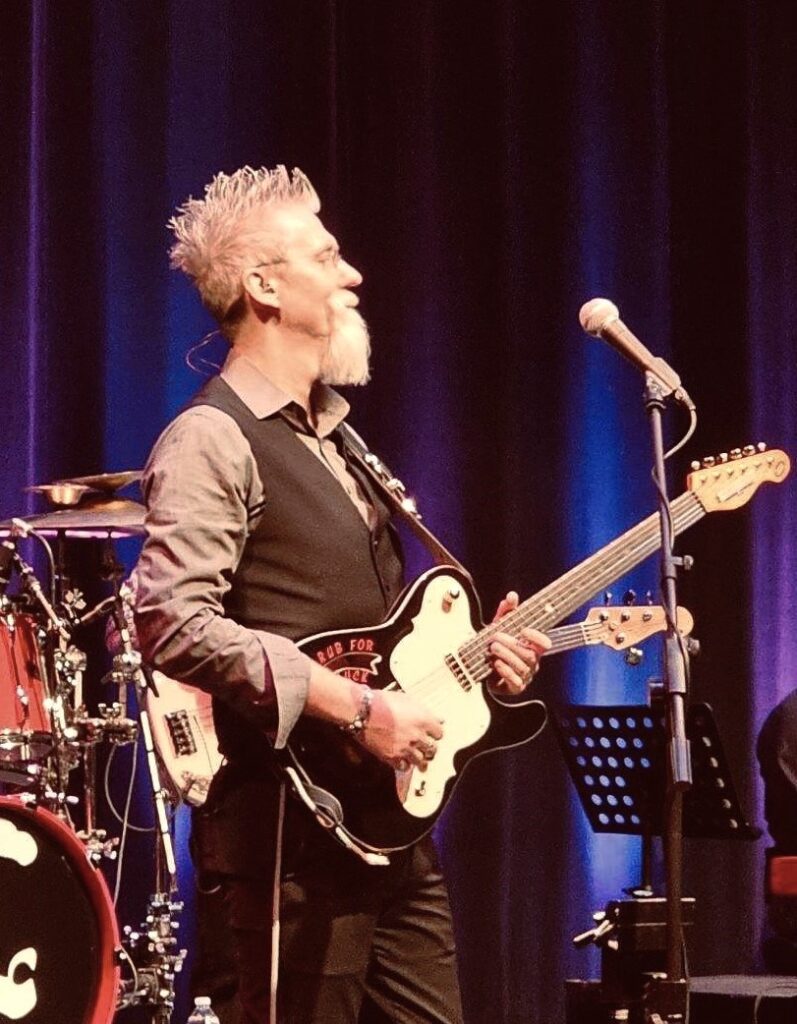

“It was kind of out of nowhere,” Boes said. “Alan contacted me because he needed a guitar player. A guy that I did know and a guy that I didn’t know referred me to him.”
The tribute band travels all over the country and performs about 20 of Rogers’ biggest hits each night, including the 1977 Top-10 single Lucille.
“Lucille is like maybe the fourth song in our set and I always chuckle because of the line, ‘In a bar in Toledo,’ and that’s kind of cool. How did I end up in a band where there’s actually a line in a song from my hometown?”
Boes said Rogers’ music has more depth to it than people might think. “I dig it because much of his material is written like jazz tunes. They don’t swing but they have interesting chord changes.”
He strives to play the familiar songs with an artful balance of being faithful to the original recordings while adding some of his own ideas.
“My goal is to do like 75 to 80 percent like the tune, and personally add about 20 percent of my own musical ideas. I want to change it a pinch but I know when to, and that’s the key — not to change it just because you’re bored.
“Most of the people would say it’s perfect because I know they’re keyed into Kenny. I get like two guitar solos that aren’t on any of his records but they have the feel of what the record was. But I move it around so it’s not just a duplicate of a record every night.”
That personal touch and his deft variations keep it interesting for Boes and the other musicians in the seven-person band, as well as for fans who have seen the show multiple times.
“I don’t want to think it’s totally self-serving. And if somebody were to say, ‘Well, that’s not 100 percent like the record.’ I’d say, ‘You’re absolutely right!’,” he added with a laugh.
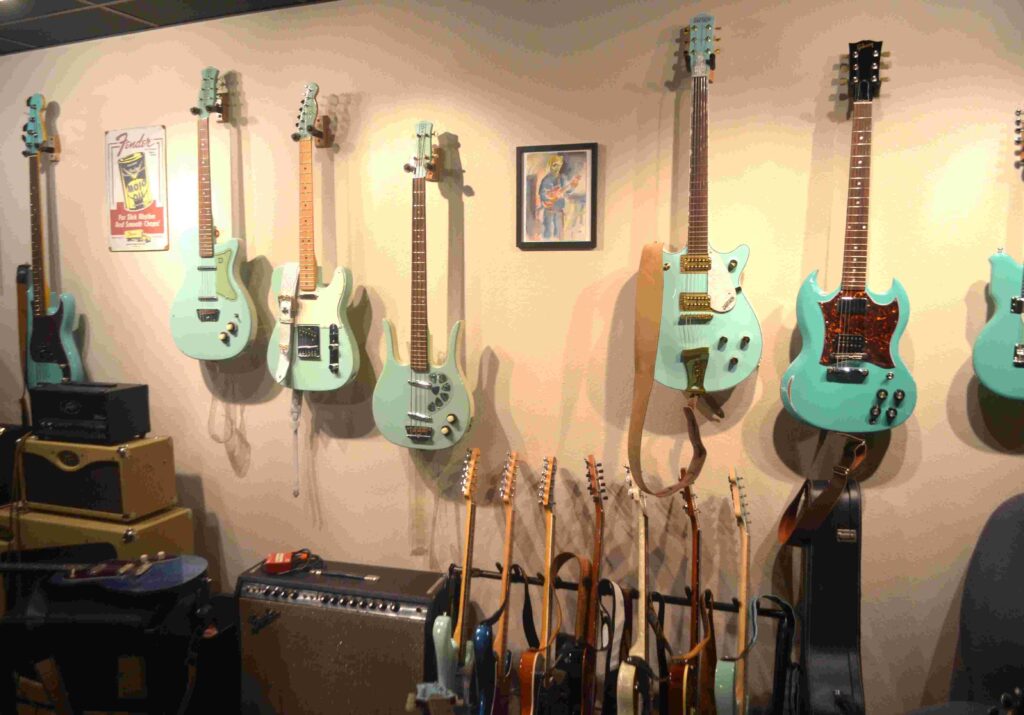

The guitar
While he enjoys the reference to Toledo in Lucille, that’s just one of the many ways that Boes is strong on Toledo. He loves to support the local music scene, musicians and companies that make guitars and music gear.
He has several Wagner guitars built from scratch by Larry Wagner. He is quick to point out that his current favorite is a uniquely shaped electric Wagner — painted seafoam green, of course — and featuring gold-plated DeArmond pickups that were made in Toledo in the 1960s.
“I love the fact that I travel with a guitar that’s from my hometown, and these pickups were made here back in the ‘60s.”
Boes also has several guitars made by Reverend. That company manufactures its guitars in South Korea but distributes them nationwide through its headquarters in Toledo.
One of his students paints and refinishes guitars with a scratched-up “relic” look, making them look aged and worn. One was a Gibson SG that originally was brown but was refinished in … what else, seafoam green.


“Seafoam green is my aesthetic,” Boes said. “Everybody kind of expects the green now. He brought it to a lesson and I’m playing it and he says, ‘What do you think?’ And I go like, ‘It’s pretty cool.’ And he goes, ‘Do you want to buy it?’”
“He’s a good dude and I want to support his relic-ing stuff, and he’s a local guy, so, yeah.”
Boes picks up a seafoam green Wagner electric guitar that had been lying on a stool and starts playing a tune, unplugged. The notes flow smoothly and melodically.
“The guitar has always been my musical awakening,” Boes said. “There’s just so much about it that I love.”
